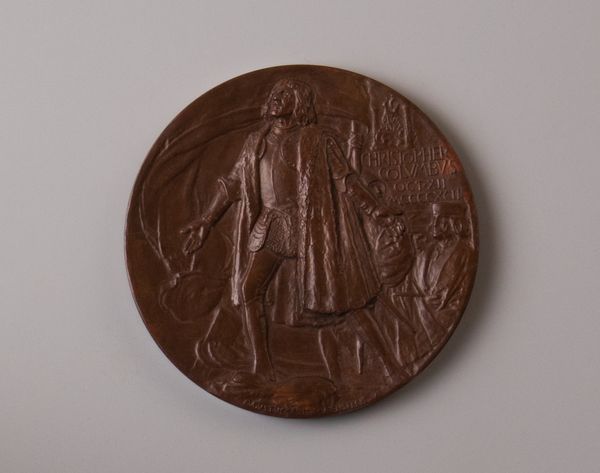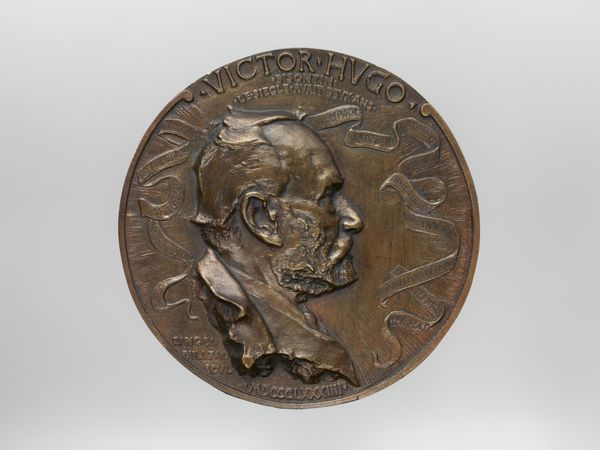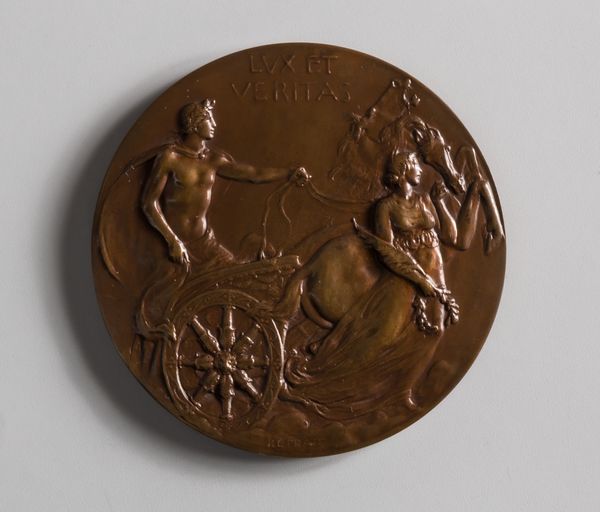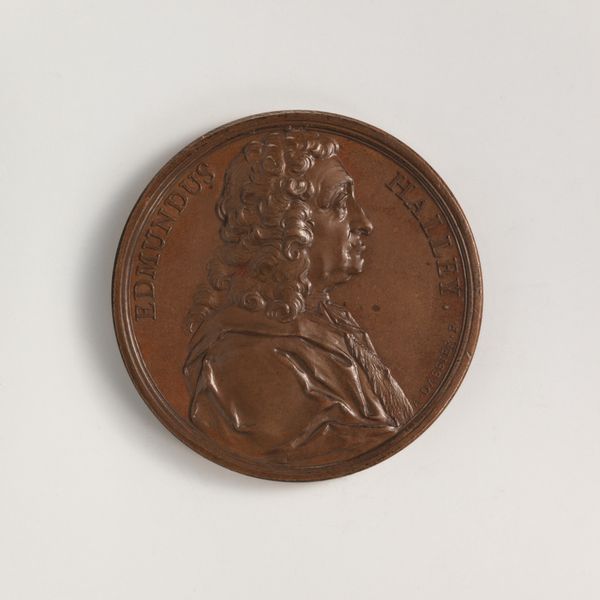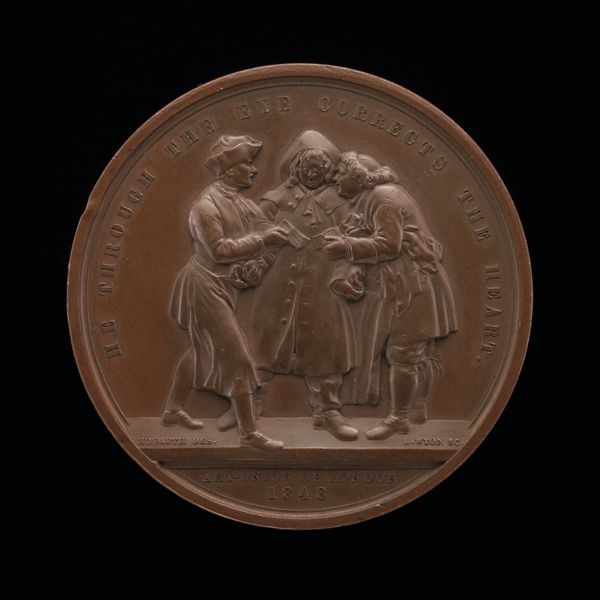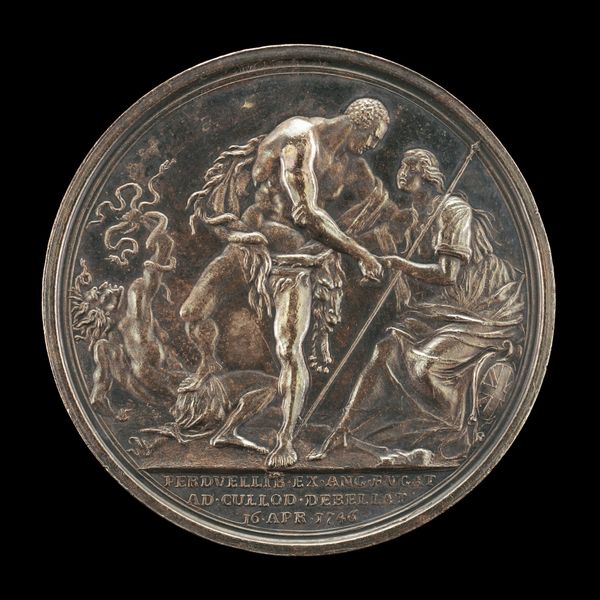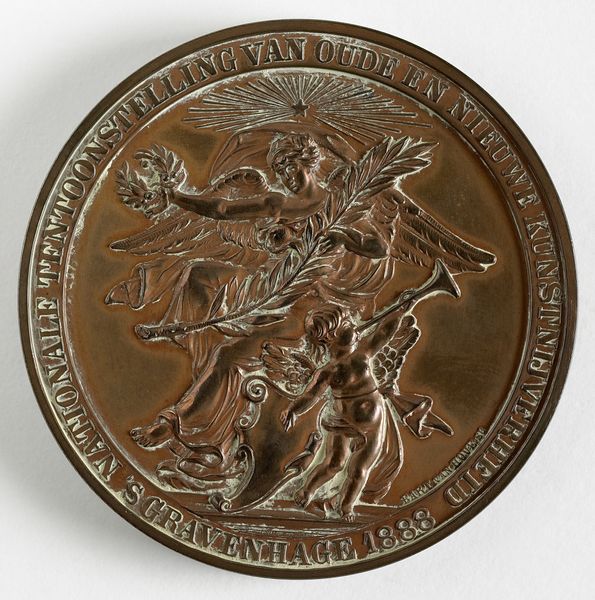
World's Columbian Exposition Commemorative Presentation Medal 1892 - 1894
0:00
0:00
relief, bronze, sculpture
#
portrait
#
neoclassicism
#
sculpture
#
relief
#
bronze
#
sculpture
#
carved
#
history-painting
Dimensions: Diam. 3 in. (7.6 cm)
Copyright: Public Domain
Editor: This is the "World's Columbian Exposition Commemorative Presentation Medal," made between 1892 and 1894 by Augustus Saint-Gaudens. It’s a bronze relief sculpture. It looks grand and very...stately, I guess? What do you see in this piece from a formal perspective? Curator: Note the careful rendering of texture—the smooth expanse of the background contrasting with the detailed articulation of Columbus’ armor. How does this visual tension shape our understanding of the figure and his position in space? Editor: I see that the light catches the armour, giving it this striking prominence. Does the medal’s composition employ any kind of spatial tricks? Curator: Indeed. The overlapping of figures and the subtle variations in relief depth create a shallow but palpable sense of depth, contributing to the work’s complex spatial dynamic. Consider how line and form direct your sight; do they converge or diverge? Editor: Diverge I think. The robe seems to send you outward, drawing your attention around the edge, whilst Columbus in the centre commands attention. What purpose could this tension serve? Curator: It establishes the piece's semiotic framework. The figure’s placement at the center, combined with the diverging lines, creates a focal point that simultaneously commands attention and extends it towards the edges, drawing one's eye through a structured visual path. Editor: It's amazing to observe how the structure enhances Columbus' presence. That really shows how composition brings it to life. Thank you. Curator: Indeed. Hopefully now, when encountering this relief, you can apply these concepts independently.
Comments
No comments
Be the first to comment and join the conversation on the ultimate creative platform.
